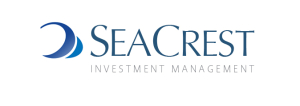It was a roller coaster ride for global markets during the quarter. The markets continued their September decline into an October low where the recovery began. The S&P 500 Index rose 7.5% with the Dow Jones Industrial Average outperforming with a rise of 16%. The NASDAQ composite however fell 0.8%. The MSCI All Country World Index rose 9.9% along with the Bloomberg U.S. Aggregate Bond Index which rose 1.9%. U.S. Treasury rates were mixed as the yield curve further inverted during the quarter. The ten-year treasury at 3.87% was four basis points higher at quarter-end versus the prior quarter while the two-year treasury at 4.43% rose 14 basis points. This level of inversion does not bode well for the economy in 2023. The three-month U.S.T-bill at a yield of 4.37% is now 50 basis points higher than the 10-year U.S. Treasury note, historically a sign of a forthcoming recession.
The Federal Reserve continued to raise the Federal Funds rate during the quarter albeit they slowed from their 75-basis point pace (four during 2022) to 50 basis points. They also continued to reduce their bloated balance sheet on a monthly basis. At the next FOMC meeting in early February we expect them to increase the Federal Funds rate another 50-basis points. What is on the minds of all concerned is will the FOMC increase the Federal Funds rate 50 basis points in both February and March? The six-week period between the March and May meetings should give them time to observe the lagged effects of how sharply rising interest rates affected inflation and inflationary expectations. This may in turn allow them to pause at the May 2023 meeting. As we have said before: ‘Historically, in the face of rampant inflation, the FOMC continues to tighten until they ‘break something’, even if this results in a recession’. A pause to their increasing rates in May could prove supportive for the markets if inflation has receded considerably. However, an interest rate reversal (read reduction) this summer would most likely instill considerable volatility to the markets.
As we have noted previously, The FOMC has hiked interest rates further and faster than anytime in modern history. US Bond market losses in 2022 rival the debacle in bond markets of 1920, 1931 and 1940. As also noted last quarter we thought that the FOMC would target a 5% Federal Funds market in 2023. While this was not the market consensus, it is now. The Core PCE Deflator (the FOMC’s favorite inflation indicator) is projected to stay elevated at 4.5%, falling to 3.1% in late 2023 and 2.3% in 2024.
As we stated in each quarterly review of 2022, market volatility will likely continue into 2023. We are concerned about a global equity and fixed income market correction of even more substance than has already occurred in 2022. Even with broad declines in equity prices during 2022, valuations remain elevated. Comparative valuations to the 1999/2000 overvalued equity markets cannot be and should not be ignored. Intermittent ‘bear market’ rallies (of which we had several in 2022) of considerablemagnitude (as we saw in August and this past quarter) and subsequent declines thereafter might well be the norm for the balance for 2023. While fixed income rates have climbed, the interest rate spread for investment and non-investment grade securities still does not reflect realities in today’s inflation fueled economy. The dollar surged against world currencies this year reaching 30-year highs this past October. While the dollar has come down to it’s August 2022 levels, it is still considerably higher than it was inearly 2022.
And we repeat: The impact of the war in Ukraine cannot be assimilated into the global economy with any degree of confidence. The human and economic tragedies are reminiscent of World War II. Moreover, profits at US multinational companies will continue to be negatively affected by the strong dollar, the war and the resultant slowing of economies in Europe. These horrors and the aftermath of the pandemic means caution in the global markets continues to be warranted, especially given the periodic emergence of new Covid variants.
Our continuing search for and investment in undervalued assets requires patience and a healthy dose of optimism for humanity.
